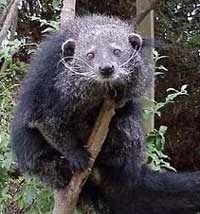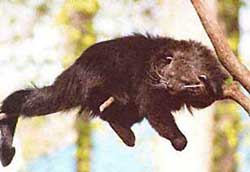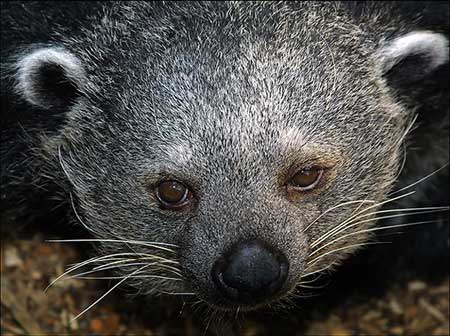 Commonly known as the Binturong, its scientific name is Arctictis binturong. While it may seem clumsy on the ground, it always feels at home in the trees. Up there, it moves slowly. This creature likely never fears hunger, so there’s no need to rush. It is so cautious that when moving, it never lets go of its long tail clinging to a branch until it can be sure that its feet are securely attached to another branch.
Commonly known as the Binturong, its scientific name is Arctictis binturong. While it may seem clumsy on the ground, it always feels at home in the trees. Up there, it moves slowly. This creature likely never fears hunger, so there’s no need to rush. It is so cautious that when moving, it never lets go of its long tail clinging to a branch until it can be sure that its feet are securely attached to another branch.
However, it is quite ironic that if confined in a cramped cage, it becomes lively.
The Binturong enjoys eating fruit (its teeth are small) and has molars for grinding food. It prefers to live alone and often hunts at night.
 In a year, this species typically has two breeding seasons, around March to April and October to November. The gestation period lasts 99 days, with each litter consisting of 1 to 9 offspring.
In a year, this species typically has two breeding seasons, around March to April and October to November. The gestation period lasts 99 days, with each litter consisting of 1 to 9 offspring.
The Binturong has a fluffy black coat from head to tail, without any spots of other colors. Its long tail has a special function: it can grasp tightly to tree trunks.
Each foot of the Binturong has 5 claws, but it cannot retract them.
An adult male Binturong has a body length of about 1 meter, not including the tail, which is approximately 0.8 meters long, and weighs around 14 kg.



















































